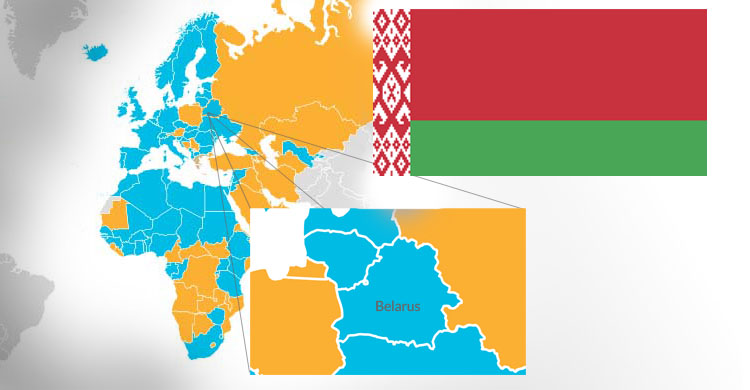Accession of Belarus Brings AEWA Membership to 76

The accession of Belarus brings AEWA Membership to 76
Bonn, 1 April 2016 - Belarus has completed its accession process and deposited its instrument of accession with Agreement’s depositary, the Government of the Netherlands. Belarus therefore became AEWA’s 76th Party on 1 April.
Belarus is a landlocked country in Eastern Europe and has borders with the Russian Federation, Latvia, Lithuania, Poland and Ukraine. The country has an area of just over 200,000 km2 and a population of just under 10 million, approximately 2 million of whom live in the capital, Minsk. The country is relatively flat and its landscape is characterized by forests, which cover 40 per cent of the territory, and mires and peatlands, including the Pripyat River floodplain which constitutes one of the largest wetlands in Europe.
“With the largest fens and river floodplains in Europe and an impressive restoration scheme of peatbogs and open mires, Belarus offers an environment of particular importance for migratory waterbirds”, said AEWA Executive Secretary, Dr Jacques Trouvilliez.
The European Union and the United Nations Development Programme (UNDP) have jointly run a project to develop a strategy on conservation and sustainable utilization of biological diversity covering the period 2011-2020 in Belarus. A key component of the strategy is to secure and restore fragile and vulnerable habitats such as peatlands with a view to extending protection to a minimum of 8.3% of the national territory. Peatlands not only provide important habitat for rare species of wild fauna and flora but also serve as carbon sinks and therefore contribute to measures aimed at combatting climate change.
Belarus acceded to the parent Convention, CMS, in 2003 and has also signed the Memorandum of Understanding on the Conservation of the Aquatic Warbler (Acrocephalus paludicola) as Belarus hosts 60% of the global population of this endangered species.
According to the species list on BirdLife International’s data zone, of the 220 migratory bird species occurring in Belarus, nearly 100 are migratory waterbirds covered under AEWA. They include the Lesser White-fronted Goose (Anser erythropus), the Common Pochard (Aythya ferina), the Long-tailed Duck (Clangula hyemalis), the Velvet Scoter (Melanitta fusca) and the Horned Grebe (Podiceps auritus), all of which are classified as Vulnerable on the IUCN Red List.
“During the international meeting held in Minsk in May 2015, all the participants noticed the efforts made to combine economic development and biodiversity conservation which are our ultimate ambition under the Sustainable Development Goals,” added Dr Trouvilliez.
Last updated on 20 June 2016


